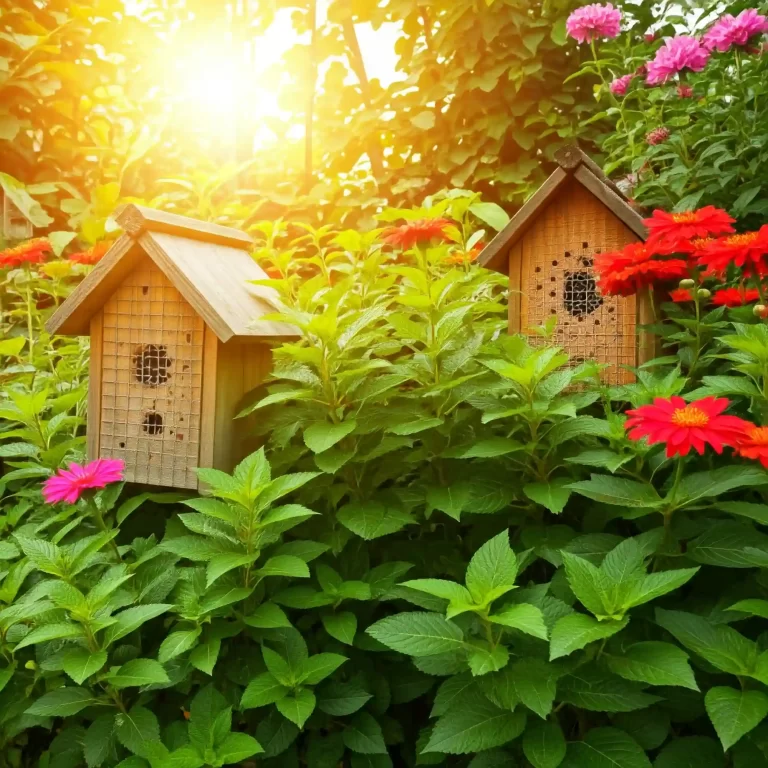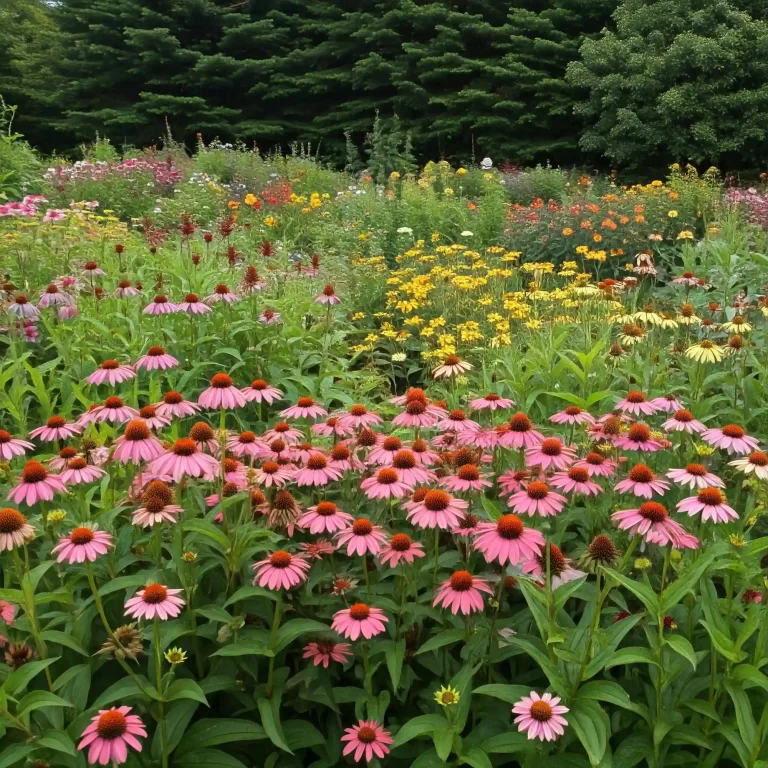Key Takeaways:
| Aspect | Information |
|---|---|
| What are garden pests? | Insects, animals & diseases that damage your plants. |
| Why identify pests? | Targeted control methods for a thriving garden. |
| Recognising signs? | Look for chewed leaves, wilting, unusual spots, droppings & webs. |
| Damage caused? | Holes, stunted growth, discolouration & wilting. |
| Control methods? | Organic sprays, beneficial insects & physical barriers. |
The Pesky Invaders: Unveiling Common Garden Pests
Our beloved gardens, bursting with life and colour, can sometimes become battlegrounds against unwanted visitors. These critters, known as garden pests, come in all shapes and sizes, from miniscule insects to furry mammals. They can wreak havoc on your precious plants, leaving them looking worse for wear. But fear not, fellow gardeners! By recognising these common garden pests, their tell-tale signs, and the damage they cause, we can reclaim our green havens.
Creepy Crawlies: The Menacing World of Insect Pests
Insects are some of the most frequent garden pests, and their sheer variety can be overwhelming. Here are a few of the most common culprits:
- Aphids: These tiny sap-sucking insects gather in clusters on leaves and stems, causing stunted growth and yellowing leaves.
- Beetles: There are many types of beetles, but some, like click beetles and flea beetles, munch on leaves and flowers, leaving behind ragged holes.
- Caterpillars: The larval stage of butterflies and moths, these green munching machines can devour entire leaves, leaving plants looking skeletal.
- Whiteflies: Similar to aphids, whiteflies are tiny, winged insects that suck sap, causing leaves to curl and turn yellow.
Common Insect Pests and Their Damage
| Insect Pest | Signs of Infestation | Damage |
|---|---|---|
| Aphids | Clusters on leaves & stems, sticky residue | Stunted growth, yellowing leaves |
| Beetles | Holes in leaves & flowers | Ragged holes, skeletonised leaves |
| Caterpillars | Large holes in leaves | Entire leaves devoured, defoliation |
| Whiteflies | Whiteflies flying around disturbed plants, sticky residue | Yellowing leaves, curling leaves |
Unveiling the Enemy: Recognising Signs of a Pest Problem
A keen eye is your best weapon in the fight against garden pests. Here are some tell-tale signs to watch out for:
- Chewed leaves: Irregular holes or ragged edges on leaves are a clear sign of munching insects.
- Wilting plants: Plants that suddenly become limp and droopy could be suffering from sap-sucking pests or disease.
- Unusual spots: Discoloured spots, blemishes, or strange growths on leaves or stems can indicate fungal diseases or insect damage.
- Droppings: Frass (insect droppings) can be a giveaway of a hidden pest population. Look for tiny pellets or droppings on leaves or around the base of plants.
- Webs: The presence of webs is a sure sign of spiders or other web-spinning insects, which can also be harmful to plants.
Remember: Early detection is key! By regularly inspecting your plants for these signs, you can identify and address a pest problem before it gets out of hand.
Decoding the Damage: Understanding How Pests Harm Your Plants
Different pests cause different types of damage. Knowing what to look for can help you diagnose the culprit and choose the most effective control method. Here’s a breakdown of some common types of damage:
- Holes in leaves: This can be caused by chewing insects like beetles or caterpillars.
- Discolouration of leaves: Yellowing, browning, or mottled leaves might indicate a disease or sap-sucking insects.
- Stunted growth: This could be due to a variety of factors, including insect damage, disease, or nutrient deficiencies. However, a sudden halt in growth can often be a sign of pests.
- Wilting: Wilting leaves often point to a problem with water uptake, which can be caused by root damage from pests like grubs or by diseases that affect the vascular system of the plant.
Taking Back Control: Effective Methods for Pest Management
Once you’ve identified the pest and the damage it’s causing, you can choose the most appropriate control method. Here are a few options to consider:
A. Natural and Organic Pest Control
For the eco-conscious gardener, there are several natural and organic methods to control pests:
- Companion planting: Planting certain herbs and flowers alongside your vegetables can deter pests. Companion planting works by attracting beneficial insects like ladybugs and hoverflies, which prey on harmful insects.
- Insecticidal soap: This organic spray made from fatty acids can kill aphids, whiteflies, and other soft-bodied insects on contact.
- Neem oil spray: A natural oil derived from the neem tree, neem oil spray disrupts the moulting and feeding of many insects.
- Diatomaceous earth (DE): Made from fossilized algae, DE is a powder that dehydrates insects with its microscopic edges.
Natural Pest Control Methods and How They Work
| Method | How it Works |
|---|---|
| Companion planting | Attracts beneficial insects that prey on pests |
| Insecticidal soap | Kills soft-bodied insects on contact |
| Neem oil spray | Disrupts insect moulting & feeding |
| Diatomaceous earth (DE) | Dehydrates insects with microscopic edges |
B. Beneficial Insects: Nature’s Pest Busters
Nature provides its own pest control solutions in the form of beneficial insects. These helpful creatures prey on or parasitize harmful pests, keeping their populations in check. Here are some common beneficial insects:
- Ladybugs: These adorable beetles love to munch on aphids and other small insects.
- Lacewings: The larvae of lacewings are ferocious predators of aphids, mealybugs, and other soft-bodied insects.
- Hoverflies: These fly look-alikes feed on nectar but their larvae are aphid munching machines.
- Minute pirate bugs: Tiny but mighty, these pirate bugs feed on a variety of insect pests, including thrips, aphids, and beetle larvae.
C. Physical Barriers: Keeping Pests Out
Sometimes, the best defence is a good fence. Here are some physical barriers you can use to deter pests:
- Row covers: Made from lightweight fabric, row covers can be used to protect seedlings and vegetables from flying insects.
- Insect netting: Similar to row covers, insect netting can be used on fruit trees or around raised beds to exclude larger pests.
- Exclusion fencing: For persistent critters like rabbits or deer, erecting a physical fence around your garden can be necessary.
Conclusion: Cultivating a Thriving, Pest-Free Garden
By understanding common garden pests, the signs they leave behind, and the damage they cause, you’re well on your way to a thriving, pest-free garden. Remember, early detection and intervention are key. Regularly inspect your plants, choose the most appropriate control method for the specific pest, and don’t be afraid to experiment with natural and organic solutions. With a little knowledge and effort, you can create a beautiful garden that flourishes season after season.
Happy Gardening!


